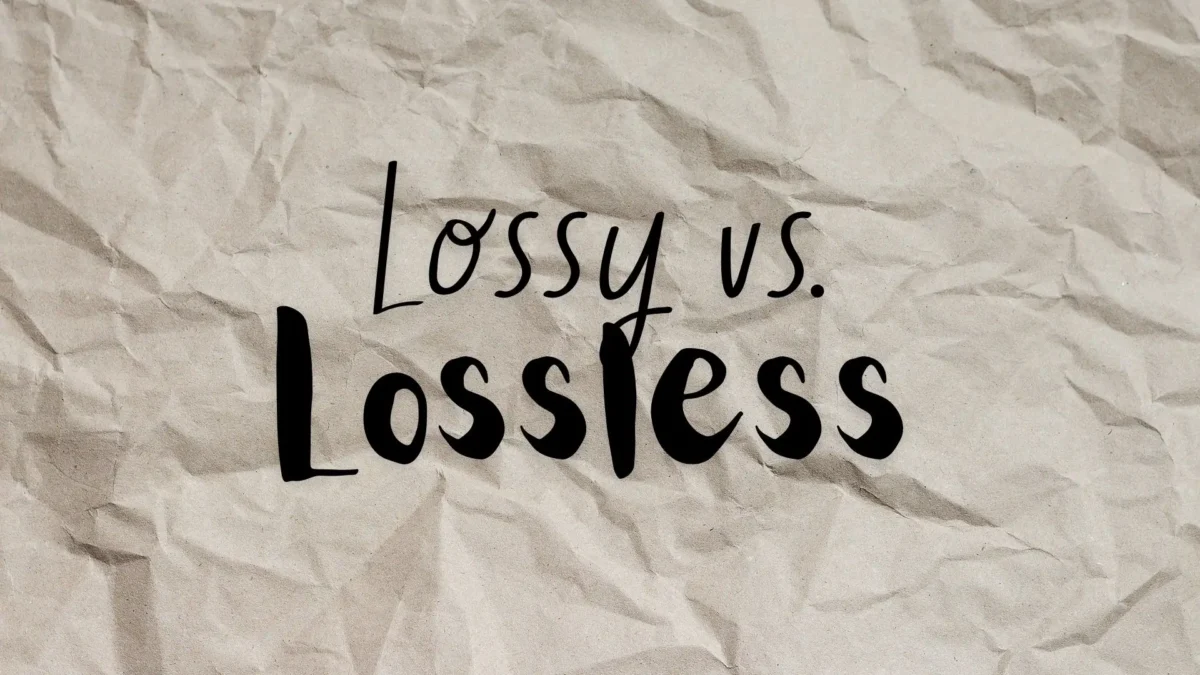If you frequently upload photos and videos on social media platforms, web pages, as well as share them then you must be aware of image compression.
With image compression you can reduce and resize the image file which makes it easier to upload them and store them, saving you some storage space as well as bandwidth.
The image compression has two major types, Lossy and Lossless. Each one of them have their own benefits and limitations which is what we are going to discuss here with you.
Let’s dive into the world of compression and learn some science behind the two famous compression methods. This will help you choose the right compression method depending on your needs!
What does Lossy and Lossless compression mean?
Compression means reducing the file size by reducing the number of digital files that are unnecessary which makes the file size smaller so it becomes easier to store, upload and transfer.
There are two major types of compression methods that are used while compressing images.
- Lossy
- Lossless

Lossy Compression
With Lossy compression, some of the original data files are removed permanently. This helps to reduce the file size drastically resulting in a smaller size of the file which becomes easier to store.
The file will be scanned thoroughly which gives the information about the unimportant digital data in the file that can afford to be deleted from the original file.
Lossy compression is used for following reasons:-
- For storage purposes (small sized file would take up less storage)
- To increase the loading speed for web pages
With Lossy compression, you can regain the original file even after decompressing the image. This also results in a drastic change in the image quality from its original quality. It works with audio, video, and images.
Files format that works with Lossy Compression
Images: JPEG
Audio: MP3, AAC
Video: MPEG, AVC, HEVC
Limitations: Quality will be compromised since there is a drastic reduction in data files.
Lossless Compression
Unlike Lossy compression, this one works by temporarily removing the unnecessary metadata. This means the original quality of the image can be gained after decompression as it restores and rebuild the compressed data. Hence the name Lossless makes sense.
This also means that there won’t be a much loss of the quality. Since it can be reversed, the process is also known as reversible compression.
Files Format that works with Lossless compression:-
Images: PNG, RAW, BMP
Audio: WAV, FLAC
General: ZIP
Limitations: compressed files will be larger than Lossy Compression.
Applications of Lossy and Lossless Compression:
Since both compression methods come with a set of advantages and disadvantages, the applications of these will differ from one another. Sometimes it will be better to use Lossy compression, while other times Lossless compression would make more sense.
Some of the Lossy and lossless applications:-
Need more storage space: since Lossy compression can reduce the file size drastically, it will be perfect to use when you need to free up storage space.
For web pages: web pages need to have faster loading speed which can only be achieved when the files are smaller in size, so Lossy would be perfect.
When you need best image quality: this time go with the lossless compression as it promises a better image quality by only temporarily deleting unnecessary data.
Converting image format: this is best suited for lossless compression since it works well with PNG too.
Summary..
Lastly, Lossy and Lossless compression are both important when you need to save space. The best compression method would depend on your requirements as well as tasks you are doing. Lossy is more suitable for web pages as it is SEO friendly while Lossless would be optimal for maintaining the image quality.
There are many platforms that allow you to compress your files with both lossy and lossless compression such as OptimizePics.com. You can easily compress your files here via the best suited compression method.

